


To make sure you get your full Social Security benefit, follow these three rules:
Wait to start receiving benefits until full retirement age: As long as you pass your full retirement age, there is no cap on how much you can earn and still receive your full benefit.
Stop work until you reach full retirement age: If you want to start receiving Social Security benefits before you reach full retirement age, take a break from work until you reach full retirement age to avoid breaching the annual income limit.
If you receive benefits before full retirement age, keep your income below the annual threshold: This amount is $21,240 as of 2023. If you reach full retirement age in 2023, the limit changes to $56,520 but only earnings up to the month before you reach full retirement age are counted.
Unlocking the Secrets of Reverse Mortgage
In this exciting episode, Morgan is joined by the knowledgeable and experienced Jason McConahy to delve deep into the world of reverse mortgage s. Whether you're a senior citizen exploring financial options or someone seeking to understand the ins and outs of reverse mortgage s, this interview is packed with valuable insights.
🏡 What are Reverse Mortgage s? Jason will break down the fundamentals of reverse mortgage s, helping you grasp the concept, and explaining how they can offer financial flexibility to seniors.
🧐 Common Misconceptions Reverse mortgages often come with misconceptions and myths. Jason will address some of the most common ones, ensuring you have a clear and accurate understanding of this financial tool.
💼 Benefits and Considerations Discover the benefits and potential pitfalls of reverse mortgages. Jason will provide invaluable advice on when and how to consider this option to suit your specific needs.
📝 What You Need to Know Get ready to take notes! Jason will equip you with essential information, ensuring you leave this interview well-prepared to make informed decisions regarding reverse mortgages.
🔑 Expert Insights With years of experience in the financial industry, Jason McConahy is the perfect guest to guide you through this complex topic. His insights and expertise will empower you to make the best financial choices for your senior years.
Join us for this informative and eye-opening discussion that will leave you with the knowledge and confidence to explore reverse mortgages as a viable financial option. Don't forget to subscribe, like, and share this video to help others on their financial journey! Maintain Me Senior Services is committed to providing you with the information you need to thrive in your golden years.
🚨 Subscribe to this channel here: 👇👇👇👇👇👇👇 ✅ http://bit.ly/38JSaoJ
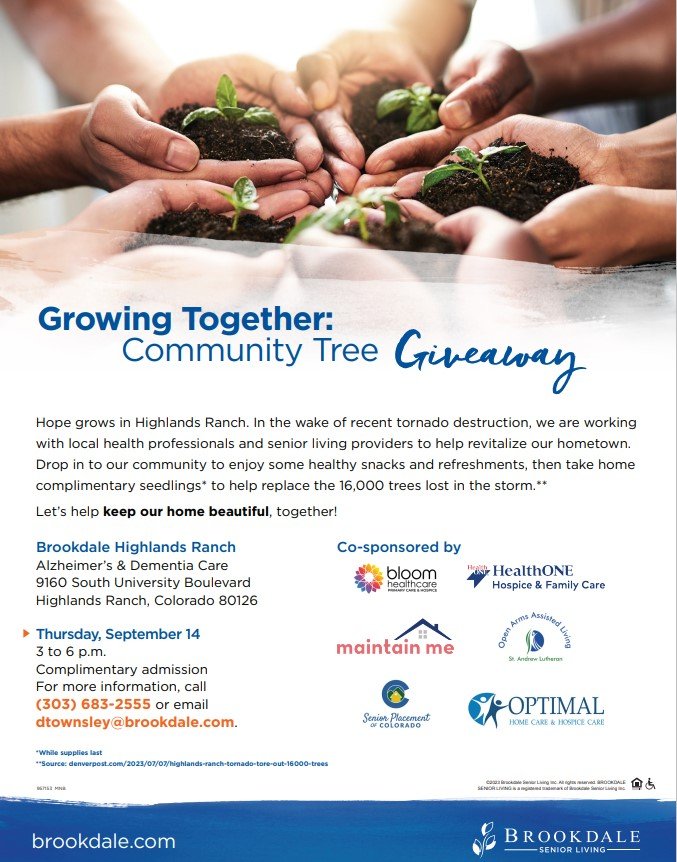
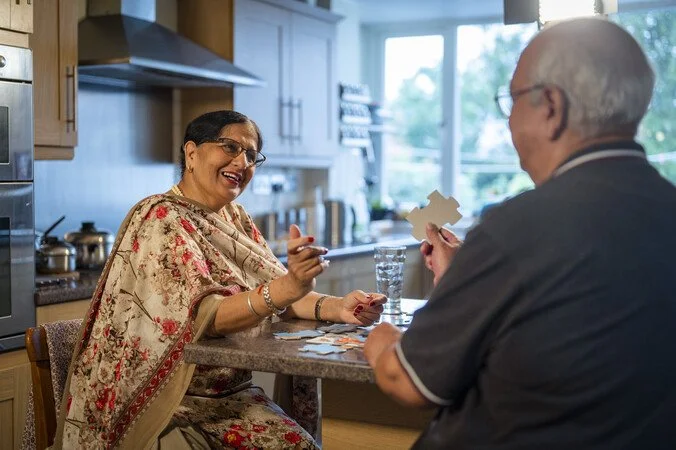
Many older adults need financial assistance to cover the costs of hearing aids, glasses, and dental services. The Society awards grants to older adults age 60 and over. Grants are available to individuals who live in selected counties in Colorado depending on the funding source. Individuals must apply for a grant. Depending upon available funding, individuals are placed on a waiting list. As funds become available, individuals are approved for grants. Individuals see ophthalmologists, dentists, and audiologists who have agreed to accept the grant. The services are free to the client, unless services are requested that are not approved by the grant guidelines.
Labor Day is the unofficial end of summer and it’s always celebrated on the first Monday in September.
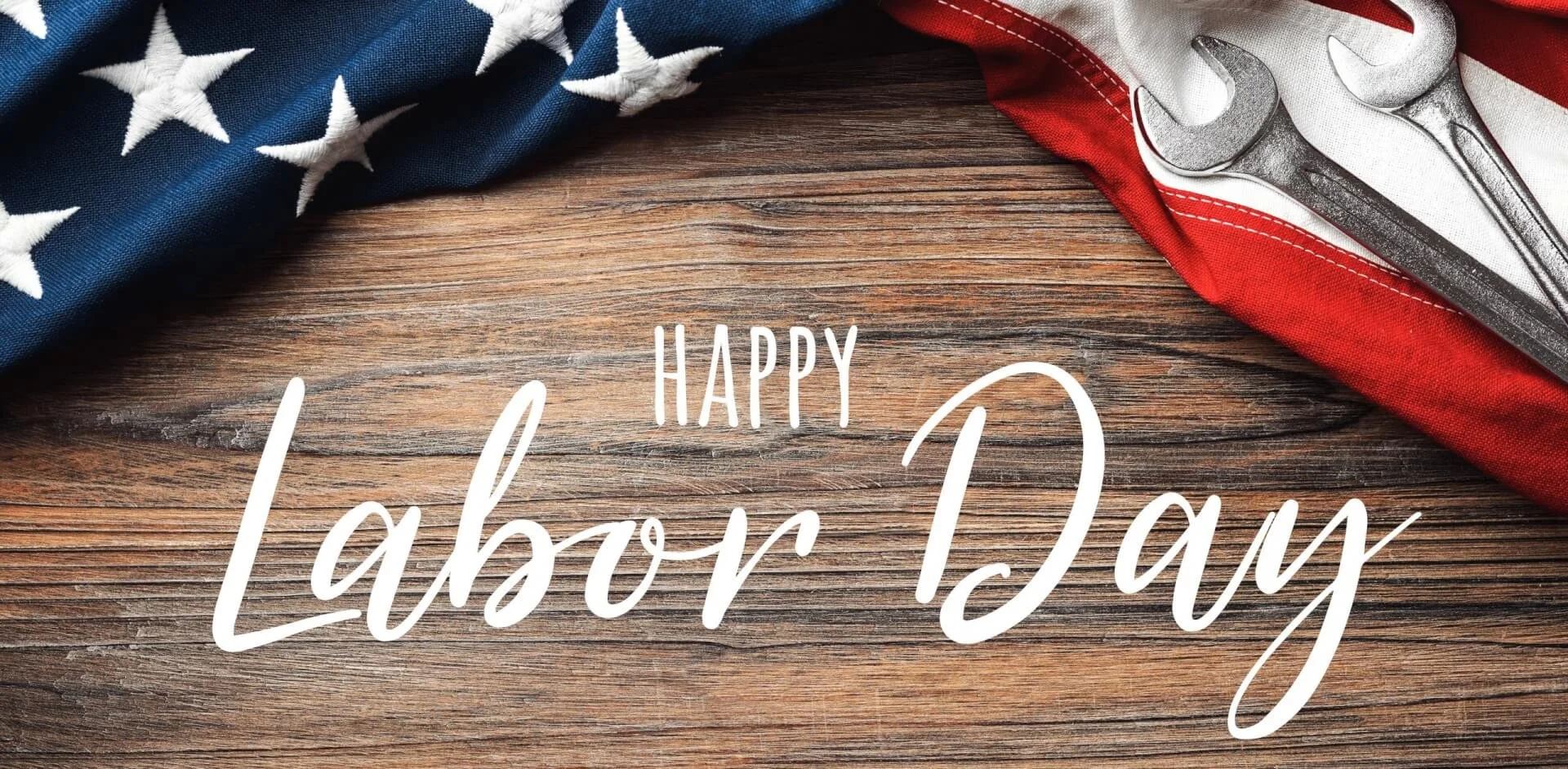
Many Americans have off from school and work to celebrate the contributions and achievements of American Workers on Labor Day. However, the day originated during one of American’s most difficult times. During the Industrial Revolution, the average American worked 12 hours a day, seven days a week just to afford basic life needs. Even children as young as five years old could be found working in mills, factories and mines across the country and only earning a fraction of what their adult co-workers made. These workers faced very dangerous work environments that were not sanitary or allowed access to fresh air. With the increase in manufacturing, labor unions formed and grew vocal, organizing strikes and rallies to protest poor working conditions and force employers to renegotiate their hours and pay.
On September 5, 1886, 10,000 workers took unpaid time off and marched from City Hall to Union Square in New York City – holding the first Labor Day Parade in U.S. History. The day did not become a federal holiday until 12 years later in 1894, when President Grover Cleveland signed it into law.
Labor Day is celebrated by families nationwide as the “last weekend” of summer where parties, cook outs and last-minute summer activities are celebrated.
From all of us at Maintain-Me, we wish you a safe and relaxing Labor Day!
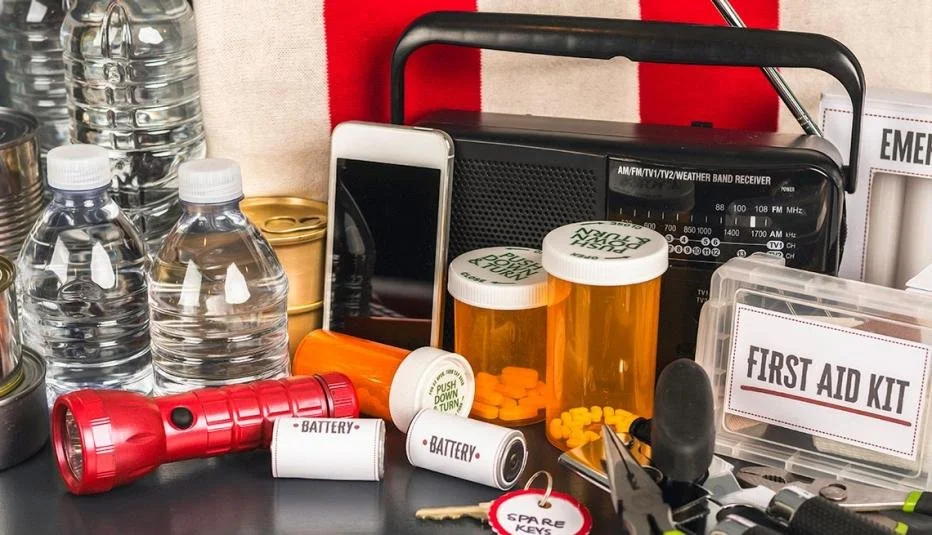
While a majority of older adults age 50-plus believe they are prepared for a disaster emergency, a recent online survey suggests a gap between their perceptions and actual readiness. While 59% of older adults express confidence in their ability to navigate a natural disaster emergency, a majority of older adults have not taken steps to ensure they receive information during a disaster and are more likely to be unprepared if a disaster strikes.
Less than one-third (29%) of those surveyed have created a comprehensive emergency plan for natural disasters, and just one in 10 have embraced modern tools such as disaster-related apps or text notifications from official national disaster resource agencies.
Many are aware of national disaster preparedness resources. Federal Emergency Management Agency or FEMA (89%), the American Red Cross (86%), and the Salvation Army (72%) are familiar to most. At the local level, television remains a prime source of information, with 61% awareness. State resources are recognized by half of the respondents (50%). Unfortunately, despite high awareness, the utilization rate is low. A mere 10% have sought information from national disaster organizations, such as by downloading their apps or subscribing to text alerts.
Social media is a significant information source, with 53% of those with social media accounts following local news outlets or TV channels. However, state and national resources remain underutilized, with only 12% following their state government, and fewer than 10% following national organizations like FEMA, the American Red Cross, or the Salvation Army.
Maintaining charged devices is crucial during emergencies. A substantial 78% own a charger they can use in a car, but fewer than half (43%) have an emergency portable charger. Just 29% own a backup generator.
While having physical documents is common, digital storage ensures accessibility from anywhere. Yet more than half (56%) have no important documents saved digitally. One in three (31%) have digitally saved their drivers license, 28% their health insurance, and 19% their housing policy.
Most older adults (64%) have had the foresight to stock extra prescription medications, but a sizable 33% have not taken this precaution.
As for pets, the furry family members, GPS technology such as microchipping or GPS collars can be a lifesaver. Yet, 53% of older pet owners have not invested in these devices.
While older adults may feel prepared for a natural disaster emergency, technology could help them better prepare for and stay informed during an emergency. Engaging with the available resources and leveraging technology can be key steps in ensuring personal safety and well-being during emergencies.
Methodology
The nationally representative survey of 1,012 U.S. adults ages 50-plus was conducted by AARP Research July 20-24, 2023 using NORC's Foresight 50+ Panel. Data were weighted to the latest Current Population Survey (CPS) benchmarks developed by the U.S. Census Bureau and are balanced by gender, age, education, race/ethnicity, and region to reflect the U.S. population of adults ages 50 and over.
For more information, please contact Brittne Kakulla at bkakulla@aarp.org. For media inquiries, please contact External Relations at media@aarp.org.
By
Brittne Kakulla, AARP Research
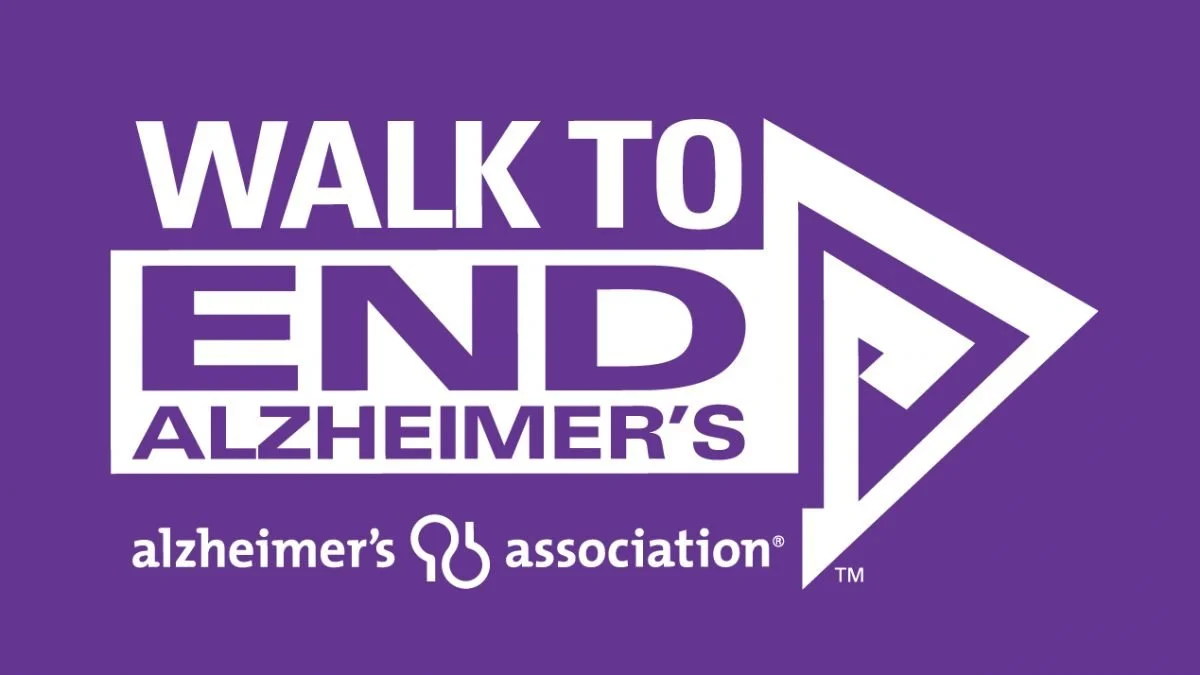
Thousands of loved ones, caregivers and supporters of Coloradans living with Alzheimer’s will rally at 13 locations across the state this summer, sharing their experiences with this tragic disease and raising funds to find an elusive cure.
More than 76,000 Coloradans are among 6.7 million Americans living with Alzheimer’s, the seventh-leading cause of death and the only leading disease without a prevention or cure.
“This disease annually kills more people than breast cancer and prostate cancer combined,” said Jeff Bird, executive director of the Alzheimer’s Association of Colorado. “It’s time we put an end to Alzheimer’s.”
The 13 Walks to End Alzheimer’s across the state are the primary source of funds for the Association in Colorado, supporting education, programs and services provided to families at no charge. In addition, the Alzheimer’s Association is the world’s largest non-profit funder of research to find a cure. Currently, it is funding 1,000 projects with over $320 million in 54 countries around the world.
The schedule of Colorado Walks to End Alzheimer’s is:
Aug. 26: Montrose and Sterling
Sept. 9: Fort Morgan and Steamboat Springs
Sept. 16: Denver and Pueblo
Sept. 23: Durango, Eagle and Fort Collins
Sept. 30: Colorado Springs
Oct. 7: Boulder and Greeley
Oct. 14: Grand Junction
The 13 Colorado Walks to End Alzheimer’s have a collective fundraising goal of $2.3 million.
Edward Jones is national presenting sponsor of the Walk to End Alzheimer’s. KMGH-TV (ABC) is the Colorado media sponsor.
To register, volunteer or make a donation to any of the 13 Colorado Walks to End Alzheimer’s, go to alz.org/co. For more information about programs and services provided at no charge, call the free 24/7 Alzheimer’s Association Helpline at 800-272-3900.
Key facts about Alzheimer’s disease
76,000 Coloradans are among 6.7 million Americans living with Alzheimer’s disease
Alzheimer’s kills more people than breast cancer and prostate cancer combined
Since 2000, deaths from Alzheimer’s have increased 145%, while deaths from heart disease have declined 7%
Women make up two-thirds of those diagnosed with Alzheimer’s – and two-thirds of the family caregivers
In Colorado alone, more than 160,000 family and friends are serving as unpaid caregivers, providing an estimated 186 million hours of support in 2022 valued at more than $4.4 billion

I met Grace because a previous client referred her to our services.
*****Did you know that a word-of-mouth referral is one of the greatest compliments we can receive? ****
Grace had been caring for her mom, Patty, in her home after moving her out of a local nursing home. Grace's Dad passed away and Patty had a stroke and Grace moved her to be closer to her.
The problem at the nursing home was that they were only using a hoyer lift to transfer Patty. Patty could hold her own weight and stand-pivot transfer, so Grace was confused why they hoyer lift was necessary. Grace knew that if her Mom continued to not use any of her strength day to day, she would lose it.
So, Grace brought Patty to live with her.
Many of our clients are the primary caregiver for their loved one, and sometimes, the work becomes more than one person can handle, despite the desire and the willingness to provide the loving care.
Another concern I often hear from clients who are primary care givers is how to keep their loved one engaged in the activities they love on top of everything else. This was the case for Patty. Patty had visited an adult day center for a while and really enjoyed being with her peers and participating in purposeful activities.
Grace was ready to make a hard decision to move mom into a community, but this time was going to be different!
I applaud Grace because she had made a big difference in Mom being able to gain her strength back. She could transfer with the help of one person and stand up long enough to brush her teeth and comb her hair- big gains after the stroke. This also meant, that Patty was accepted at an assisted living, not a nursing home.
The assisted living could help Patty remain engaged and not bedbound in a room by herself as she was last time she lived away from her family. The place they chose is located on a beautiful garden and Patty can help them pick veggies- Patty was a farmer, so this thrilled her.
While Grace was sad at the prospect of not having Mom with her all the time, she was excited for the independence Mom was gaining back. She could be social again!
What I believe and tell my clients is: As when we are young, when we get older, it takes a village of people to provide the best caring environment. Having your loved one move into a care setting like an assisted living, is making that village bigger, with more loving people to help care for your special person. I also remind them that they are still the #1 to their loved one, and they will still be highly involved in the care, but they just don't have to do it alone anymore, they have help.
📲 Are you looking for help finding care for mom, dad, grandpa, grandma or yourself in the Denver or any of its surrounding cities in Colorado? We are here to help! Whether you're looking to stay at home longer, need help navigating how to find a senior community, or how to find a nursing home in Denver, we can help make that transition so much easier for you!!
Reach out Day/Nights/Weekends whenever you want, we never stop working for you!!
Chelsea Sweeney and Morgan Jenkins
📲 Call/Text Direct at 303-481-0051
📲 Email: Chelsea@maintain-me.com
👨💻 https://www.maintain-me.com
👉 Blog: http://www.maintain-me.com/new-blog

Story by Shiv Sudhakar
People over the age of 65 are eclipsing their children and grandchildren as the fastest growing demographic who are experimenting with cannabis for the first time, according to the National Survey of Drug Use and Health. It's an annual federal report that began over 50 years ago to provide up-to-date data on the use of tobacco, alcohol and illicit drugs as well as mental health in the U.S. But many Baby Boomers are reminding people that these results may be underestimating how many people smoked "weed" when they were young adults — albeit for entirely different purposes. After World War II, there was a "baby boom" of 76 million births from 1946 to 1964, which heralded a new generation, the Baby Boomers, according to data from the U.S. Census Bureau. Many of them experimented with drugs as a rite of passage as they entered adulthood, with nearly half of the generation experimenting with illicit drugs during their younger years, according to previous research. "Many of us were smoking marijuana in the ‘70s or ’80s," Bryan Smith, 69, told Fox News Digital. "There was no idea of dosage, strength or where the marijuana came from," added Smith, who lives in Santa Barbara, California. "Sometimes the effects were undesired, but not very often," he also said.
The recent survey shows that marijuana use in the past year increased five-fold from 1.4% in 2012 to 7% among adults over the age of 65 in 2021."People over 65 were young adults when cannabis use was at an all-time high and perception of risk was low," Smita Das, M.D., PhD, chair of the council on addiction psychiatry at American Psychiatric Association, told Fox News Digital. "Today, as cannabis is more available, marketed and accepted, the interest in use may have reignited for that group to use again — but the important thing to remember is that doesn't come without risks," added Das, who is based in Stanford, California.
The current legal landscape has helped destigmatize the substance from a "drug" to an "alternative medical therapy" that can help with chronic medical issues when traditional medicine fails. "In spite of the many stigmas associated with the use of cannabis, the idea of users being ‘stoners’ or excessive users is completely overblown in older consumers," Smith said. Currently, 38 states, three territories and the District of Columbia allow the medical use of marijuana — while 23 states, two territories and D.C. have policies that regulate its recreational use, according to the National Conference of State Legislatures. Many of his peers, Smith noted, are using cannabis products that do not involve smoking, such as edibles that he feels are in more regulated and controlled dosages — allowing people presumably to use marijuana in a healthier way. "Moderation in most things is a choice, often made by seniors as a healthier way to live," Smith also said. However, cannabis remains a Schedule 1 substance under federal guidelines "defined as drugs with no currently accepted medical use and a high potential for abuse. "It is the most commonly used illegal drug in the U.S. under federal law, according to the Centers for Disease Control and Prevention (CDC). Also known as cannabis, marijuana is a plant with over 100 substances called cannabinoids, derived from the name "cannabis." Tetrahydrocannabinol or THC is the main cannabinoid that is mainly responsible for the drug’s influence on the brain. Endocannabinoids are neurotransmitters that occur naturally in the human body to send messages between nerves in the brain and spinal cord, according to the National Institutes of Health. Cannabinoids are similar in chemical structure to endocannabinoids, so they act like the naturally occurring neurotransmitters when they attach to cannabinoid receptors in the brain. This allows THC to potentially alter a person's memory, learning, attention, decision-making, coordination, emotion and reaction time, according to the CDC.
"The cannabis that the 1970s group used to use is not the cannabis of today, where products are much higher in THC content and available in more modalities than just smoked," Das cautioned. "This can potentially have more impacts on many aspects of health, ranging from medication interactions to safety risks to mental health impacts. "Experts warn that older adults are particularly vulnerable to adverse health consequences, including falls, impaired driving and negative drug interactions with their other medications when using marijuana. The number of emergency room visits associated with cannabis use exploded by more than 1800% among older adults from 2005 to 2019, according to a recent study.
Marijuana use among America's senior citizens rises as interest in the drug is 'reignited' today (msn.com)

Thanks to a new prescription drug law that went into effect last year, as of January 1, 2023, your Medicare Part D drug plan now covers most vaccines at no cost to you. All adult vaccines recommended by the CDC’s Advisory Committee on Immunization Practices are now covered with no out-of-pocket costs. Your Medicare drug plan won’t charge you a copayment or apply a deductible for vaccines you get for things like shingles, whooping cough, tetanus, and more.
It’s important to stay up to date with vaccines to protect yourself from disease and severe illness. You can also get other vaccines for free with Medicare B and Medicare Advantage, such as seasonal flu, COVID-19, and others.
Talk with your doctor about which recommended vaccines are right for you. Visit Medicare.gov or call 1-800-MEDICARE (1-800- 633-4227) for more information.
If you or a loved one are considering a move to a new state and are seeking the perfect senior living community, you've come to the right place. Morgan and Desiree, your hosts for today's video, are experienced in the field of senior living and relocation. They understand the unique challenges that come with moving states while looking for the ideal senior living community. With their combined knowledge and expertise, Morgan and Desiree will be your guides on this important journey.
Throughout the video, Morgan and Desiree will walk you through a step-by-step process to simplify your search. From understanding your needs and preferences to researching different communities, they'll provide valuable insights that can help you make an informed decision. You'll gain tips on how to assess amenities, healthcare services, social activities, and more, ensuring that the community aligns with your lifestyle and requirements. With their compassionate approach, Morgan and Desiree will address common concerns and questions that arise when considering a move across state lines. They'll discuss budget considerations, timeline planning, and strategies for making the transition as smooth as possible.
Join us as Morgan and Desiree share their personal anecdotes, professional advice, and real-life examples of successful senior living transitions. Whether you're relocating yourself or assisting a family member, this video is a must-watch to empower you with the knowledge you need for this significant chapter in life.
Remember to like, comment, and subscribe for more enriching conversations on health, wellness, and compassionate caregiving. Your support allows us to continue bringing you valuable content that makes a difference. Thank you for watching!
🚨 Subscribe to this channel here: 👇👇👇👇👇👇👇 ✅ http://bit.ly/38JSaoJ

The pandemic affected everyone in unprecedented ways. Social connections and support systems were heavily impacted, especially those of America’s older adults. The social relationships that are fostered by an active community decreased, and challenges in seniors’ health rose.
The United Health Foundation’s 11th America’s Health Rankings Senior Report highlights the many challenges, and strengths, in the health of individuals 60 and over across the country. The report covers 52 health measures.
Senior centers, which are helpful in increasing social connectivity and promoting community participation, saw a decrease in funding. The report shows that senior centers receiving funding from the Older Americans Act (OAA) decreased nationally by 5% between 2020 and 2021, and 23% since 2019. While this was likely due to pandemic-related closures, we encourage communities to invest in these important connective locations again now that it is safer to meet in person.
While some statistics show growing strengths in older American’s lives, such as a national increase in high-speed internet access and a significant decrease in food insecurity, the negative implications from social isolation are severe.
While Colorado demonstrates a relatively low risk of social isolation, it exhibits a high suicide rate; it is ranked third in overall health.
Physical inactivity, volunteerism, frequent physical distress, and early deaths all worsened on a national level for America’s older adults. All these factors contribute to or result in a decline in social connectedness, and these key findings cannot be ignored.
These concerning numbers should be a wakeup call to focus more on the mental and physical wellbeing of seniors everywhere. Preserving social connectedness, mobility, and independence contributes to quality of life for older Americans. It’s important for us to learn from the data of this report and focus on promoting the wellbeing of all older Americans.
By Dr. Matthew Husa, Chief Medical Officer for UnitedHealthcare in Colorado

One of the many advantages of having a smartphone is the ability to call or text anyone from almost anywhere – especially during an emergency. Your iPhone can call emergency services and share your location with first responders and persons you designate as emergency contacts.
You can call 911 from any phone, but using SOS or emergency calling on iPhone includes several enhanced features that could make a difference in the accuracy and quality of information sent to first responders, with the added benefit of alerting your loved ones should you have an emergency.
In this month’s post, I’ll discuss how to set up emergency contact features on your iPhone, how they’re used with your phone’s SOS or emergency calling feature, and how to ensure first responders can access your Medical ID and emergency contacts in case you are unconscious or otherwise incapacitated in a crisis.
Please note that calling emergency services (911) and use of these features requires access to the cellular network or wifi calling. iPhone 14 also has the ability to communicate over satellite.
Emergency Calling on Smartphones
Like a landline, you can call 911 by opening your phone app, dialing 911, and pressing the green Send button. It doesn’t get much easier than that. You’ll connect with a 911 operator in the US (other countries may have different options upon connecting), and they will ask you to describe the type of emergency.
Emergency SOS Calling and Contact Notification
iPhones have an emergency calling or SOS feature. When enabled, the SOS feature will:
Provide quick access to 911 calling.
Share your location with emergency services.
Automatically send a text message to your emergency contacts after the call (with an option to cancel).
Share your location with your emergency contacts and when your location changes.
Enhanced Emergency Communication Features
iPhone also has enhanced emergency communication features, including:
Specify emergency contacts.
Enter your Medical ID information.
First responder access to Medical ID and emergency contacts from your smartphone lock screen.
Automatic emergency calling, with a silent or audible countdown, after a sequence of button presses or a car crash.
Optionally record a short video or audio and send it to your emergency contacts when in SOS mode.
Let’s review the emergency calling and notification settings for the iPhone.
Set Up Emergency Contacts on iPhone
To set up emergency contacts on iPhone:
Open the Health app and tap your profile picture.
Tap Medical ID and tap Edit.
Scroll to Emergency Contacts.
Tap the Add button.
Select a contact and add their relationship to you.
Tap Done to save.
Repeat the last three steps to add additional emergency contacts.
Below the Emergency Contacts section is the Emergency Access section. To share your emergency contacts on your iPhone’s lock screen and during emergency calls:
Tap the switch to Show When Locked.
Tap the switch to Share During Emergency Call.
Set Up Emergency SOS on iPhone
To set up emergency SOS on iPhone:
Open Settings.
Tap Emergency SOS and enable any of the following by tapping the switch:
Call with Hold and Release
Call with 5 Button Presses
Call Quietly
Call After Severe Crash
Emergency calls, when initiated, start a countdown with audible and visual cues. You have the option to cancel.
Call with Hold and Release
When enabled, Call with Hold and Release starts an SOS call countdown by pressing and holding the side button and one of the volume buttons simultaneously, then releasing both at the same time.
Call with 5 Button Presses
When enabled, Call with 5 Button Presses starts an SOS call countdown by pressing the side button 5 times.
Call Quietly
When enabled, Call Quietly works in combination with the previous SOS calling features by omitting visual and audible cues during the SOS call countdown. The purpose of Call Quietly is to enable anyone to seek emergency assistance with their iPhone without drawing attention to themselves in situations where their personal safety may be at risk.
Call After Severe Crash
iPhone 14 has Crash Detection, which can sense if your vehicle is involved in a collision or rollover accident. If enabled, Crash Detection displays the SOS slider and a Cancel button after you have crashed your car. You have 20 seconds to cancel or your iPhone will automatically call 911.
Access 911 Calling, Medical Info, and Emergency Contacts from Lock Screen
iPhone has an Emergency button visible from the unlock screen.
Swipe, tap, or press the home button to access the unlock screen.
Tap the Emergency button.
Slide the SOS button to the right to call 911.
To view emergency contacts and medical information:
Swipe, tap, or press the home button to access the unlock screen.
Tap the Emergency button.
Slide the Medical ID button to the right to view medical info and emergency contacts.
Used together, emergency calling, information, and location-sharing features can help keep you safe in an emergency situation.
Next month, I’ll discuss emergency contact features on Android smartphones.
Patrick Baker is an IT consultant and founder of Prime of Life Tech. Learn more about his services at PrimeOfLifeTech.com, email info@PrimeOfLifeTech.com, or call (720) 319-7145.
In this insightful episode, join us as we sit down with experts Morgan Jenkins and Desiree Diaz to explore the delicate topic of communicating with individuals diagnosed with dementia. Living with dementia presents unique challenges, not only for the person affected but also for their loved ones and caregivers.
Morgan Jenkins, a renowned dementia care specialist, and Desiree Diaz, a compassionate caregiver with years of experience, team up to share their expertise on fostering meaningful connections through understanding rather than confrontation. Arguing with someone diagnosed with dementia can exacerbate confusion, frustration, and distress. In this engaging conversation, Morgan and Desiree emphasize the importance of patience and empathy in communication. Drawing from their extensive backgrounds, they provide practical tips and real-life examples that highlight how embracing a gentle approach can lead to more positive interactions.
Topics covered in this discussion:
Understanding their reality
The Impact of Arguing: Learn why arguing or contradicting a person with dementia can lead to heightened stress and deteriorating cognitive function.
Empowering Caregivers and Meaningful Engagement: Discover effective communication strategies that prioritize respect and validation, fostering an environment of trust and emotional support.
Increasing Quality of Life: Validation and Redirection, Explore techniques such as validation and redirection that can transform conversations and enhance the quality of life for both individuals with dementia and their caregivers.
Remember to like, comment, and subscribe for more enriching conversations on health, wellness, and compassionate caregiving. Your support allows us to continue bringing you valuable content that makes a difference. Thank you for watching!
🚨 Subscribe to this channel here: 👇👇👇👇👇👇👇 ✅ http://bit.ly/38JSaoJ

Are you looking into Assisted Livings and need to know the down and dirty? Do you want to know about up front fees, specific age requirements, and all the things no one tells you. Maintain Me goes over all the specifics of assisted livings in Colorado. If you are looking to move to assisted living or community living do not move until you watch this first as Colorado we see different things in each community. In this informative video, Maintain Me will educate you on the 5 must-know things about assisted living.
Whether you're considering moving into an assisted living community yourself, or helping a loved one make the transition, it's crucial to understand what is standard and what is unique to each community.
In this video, you'll learn about entrance fees and other costs associated with assisted living, as well as the age requirements for residents. You'll also gain insight into the different levels of care offered in these communities, and what to expect in terms of cost for each level. Maintain Me will also provide valuable tips on how to choose the right assisted living community for your needs, and what to look for when visiting potential communities.
If you're considering assisted living for yourself or a loved one, this video is a must-watch. Let Maintain Me help guide you through this important decision and provide you with the information you need to make the best choice for your unique situation.
The Senior Hub’s Adult Day Service provides a break (respite) to the caregiver while providing social activities and health services for adults with Alzheimer’s Disease, dementia, chronic illnesses, and other problems that increase their needs for care. Adult Day Service participants have an opportunity to interact socially with peers, share in stimulating activities, and receive assistance with their activities of daily living.
We provide supervised social and physical activities, discussions to stimulate memory, nutritious lunch and snacks and wellness checks.
We offer support and socialization for older adults who are at risk being home alone during the day due to physical, cognitive, or socialization needs.
We offer a full day program five days per week.
We accept private pay clients and some insurance plans.
Caregiver Grant assistance may be available.
Our services allows a family to keep their loved one at home, rather than placing them in nursing or assisted-living care.
We offer the families of those we serve, peace of mind and a healthy solution to the care of those they love.
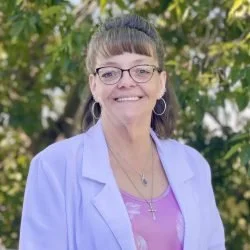
Jennifer Kucera
303-426-4408 x216
jkucera@seniorhub.org
Adult Day Services are one of the fastest growing components of community-based long-term care. They have been providing a form of respite for caregivers in the United States for more than twenty-five years. In 1978 there were only 300 centers nationwide. According to the National Adult Day Services Association (NADSA), there are now over 4,000.
Providing care for an aging parent, spouse, or loved one can be an overwhelming responsibility for family members and friends. Too often, struggling caregivers believe that nursing home placement is the only alternative available to them. Adult Day Services can be an option.
2360 West 90th Avenue
Federal Heights, CO 80260
Monday, Wednesday, Friday 8:00am to 4:30pm. Tuesday by appointment.
Are you concerned about the well-being of your aging loved ones? Do you often find yourself wondering if they require additional care and support? Look no further! Join us for an eye-opening and informative session with two seasoned experts, Chelsea Sweeney and Morgan Jenkins, as they walk you through the essential steps of recognizing when your loved one needs more care. Maintain Me Senior Services is dedicated to meeting you wherever you are in the aging process. Whether you're just starting to explore senior care options or currently navigating through a complex caregiving journey, Chelsea and Morgan are here to guide you every step of the way.
In this exclusive YouTube session, you'll gain valuable insights and practical tips on:
👉 Identifying Early Warning Signs: Chelsea and Morgan will help you recognize subtle indicators that may indicate your loved one's need for additional care. Understanding these signs can make a significant difference in ensuring their safety and well-being.
👉 Assessing Care Requirements: Different stages of aging require varying levels of assistance. Learn how to conduct a comprehensive evaluation of your loved one's needs, ensuring they receive the right level of care at the right time.
👉 Navigating Senior Care Options: With their extensive experience, Chelsea and Morgan will shed light on the various senior care options available, from in-home assistance to assisted living communities, and help you choose the best fit for your loved one's unique situation.
👉 Emotional Support for Families: Caring for an aging family member can be emotionally taxing. Gain valuable advice on how to manage caregiver stress and find a strong support network to share your journey.
👉 Q&A Session: Have burning questions about senior care? Chelsea and Morgan will dedicate time to address your queries and provide personalized advice.
Whether you're a family member, a caregiver, or simply someone concerned about the welfare of seniors in your life, this session is for you! Chelsea Sweeney and Morgan Jenkins bring their expertise, compassion, and dedication to empower you with the knowledge to make well-informed decisions about your loved one's care.
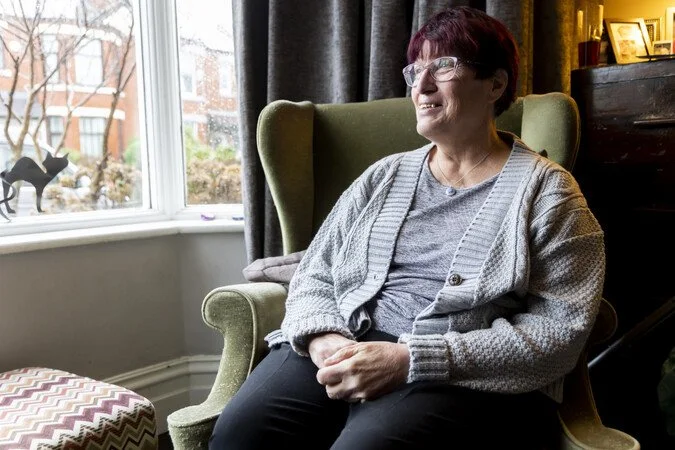
A university study suggesting the benefits of extra sleep makes sense to me.
Few caregivers have time to take naps, but I recently read study results in a June Sleep Health article that suggest short naps can benefit cognitive health. That could mean something as simple as a brief snooze could aid your fight against Alzheimer’s disease or other forms of dementia. I mean, win-win, right?
Most caregivers have needed a nap for way too long, and now there’s another reason to take one besides being tired. And being tired isn’t a viable reason for most dedicated caregivers, who view naps as a luxury. Maybe warding off dementia is a reason they’ll accept.
Sandwich generation caregivers like I was, who provide care for an elderly parent while also raising children, can only dream of naps (with eyes wide open, of course). During that season of life, I can remember jokingly telling my little son, “Please, take a nap. I’m begging you to stop and rest because one day, you’ll wish you could.” He ignored me. Little boys might need naps, but they don’t succumb until they absolutely must. Kids don’t toddle off to bed so their caregiving mom can live vicariously through their rest. But I digress.
The jury is still out on the health advantages of naps, but the authors of the Sleep Health article, “Is there an association between daytime napping, cognitive function, and brain volume? A Mendelian randomization study in the UK Biobank,” wrote, “We found a modest causal link between habitual napping and larger total brain volume.” A university press release on the same study stated that “daytime napping may help to preserve brain health by slowing the rate at which our brains shrink as we age.”
The study, from researchers at University College London and the University of the Republic in Uruguay, involved people between 4o and 69 years old. Our brains typically shrink with age, but researchers found that larger volumes are “a marker of good brain health [and] linked to a lower risk of dementia and other diseases.” The study further found that “Napping seems beneficial to performance on certain cognitive tasks.”
I mean, that makes sense, doesn’t it? Who doesn’t perform better when rested?
Neurological testing was part of my mother’s health regimen following her Alzheimer’s diagnosis. Her rate of decline was tested periodically. Among other things, she was asked to respond to specific questions and describe or define objects. My sister and I were convinced that our mother performed better when she’d rested well.
We wanted an accurate assessment of her disease stages, so we thought it imperative that her appointments followed an excellent night’s rest. We also believed those appointments should be scheduled in the morning, before the day’s activities made her tired.
Naps, especially short naps, I think, are a good thing. I know it’s challenging, but I recommend trying to sneak one in occasionally. That’s true for us all, including caregivers.
My mother used to nod off in her easy chair. Looking back, that was a perfect time for me to take a load off. I don’t think I ever did. Instead, I viewed her stillness as an opportunity to get things done, to make hay while the sun shined, as it were. Her naps were a missed opportunity for me.
Perhaps I would’ve performed better following a brief nap in the family room, sitting next to my snoozing mom. Maybe my brain’s volume would be bigger, as well.
Caring for your loved one is your priority, but a little ingenuity could make a difference for both of you. Occasionally, my mother would lie down for a nap, and my sister would lie next to her on the same bed. Because my sister is a light sleeper, she’d know when my mother stirred and was alerted to her every need.
Try that. Sit close to your loved one or lie on the bed beside them when they’re napping. Take a short nap yourself. You’ll get some rest, probably lower your risk of dementia, and your loved one will feel your closeness.
I regret not taking short naps with my mother, and not merely because the recent study suggests it’s better for brain health. Maybe lying next to her or sitting close and napping together would have made her feel cozy and comforted.
Win-win.